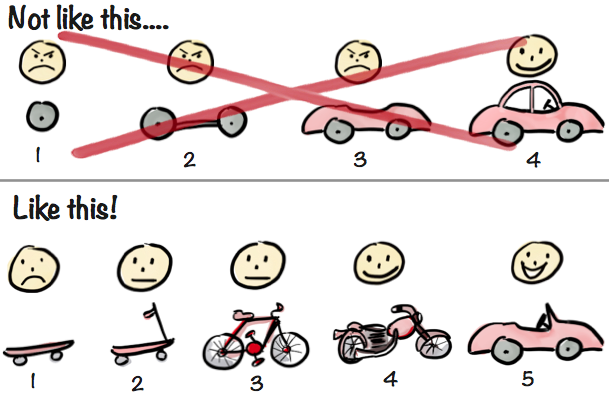How do MVPs apply to accessibility?
There’s a well-known concept in Agile software development: the Minimum Viable Product. The idea is to produce iterations of a product that solve a customer need. It gets from point A to point B each step of the way with a functioning solution.

The unfortunate reality is that MVPs most often leave accessibility out. I often hear teams defend their decisions with “it‘s an alpha version” or ”we‘re just getting started” and although some do come back and address accessibility after the fact, there are more opportunities for success when you incorporate it from the very beginning.
This also shows how comfortable teams are with marginalizing the experience of people with disabilities over and over again.
With a nod to Henrik Kniberg’s writing on MVPs (opens in a new tab), I pose this idea:
What is the cheapest and fastest way we can make something usable and accessible?
⚠️ Please note, I am not talking about overlays (opens in a new tab) here. I’m discussing a strategy of layering accessible complexity through iterations and phases.
Technical debt applies to accessibility, big time.
Which parts of an MVP live on? Of course, it depends on many factors. Often, parts of the design and code will make it to a production environment with the same biases and assumptions as the MVP.
When it comes to regular product development–not only a lean ”MVP” approach–the decisions that teams make early on live for years. I’ve heard them described as layers of sediment, to evoke a theme from nature.
Teams don’t recover from design or tech debt without significant re-imagining, replatforming, and essentially starting over.
Do less if you can’t make it accessible
We can build our components in a progressive fashion. (Progressive enhancement (opens in a new tab), anyone?)
If we could ship simpler versions of components in early phases, we could have something accessible working for the customer without going over time or budget. Then we could come back and enhance components with more bells and whistles as time allows.
Make accessibility part of your culture.